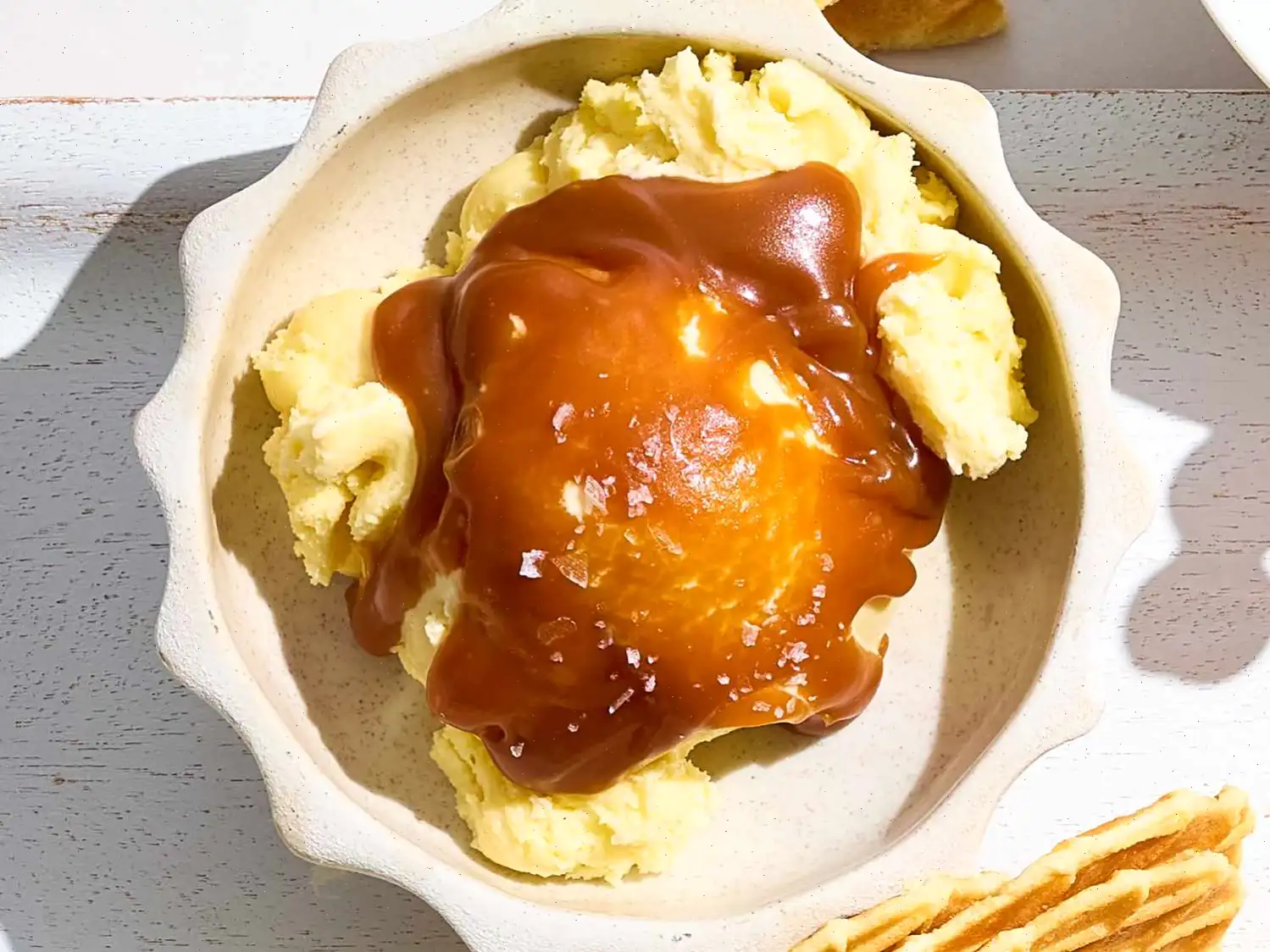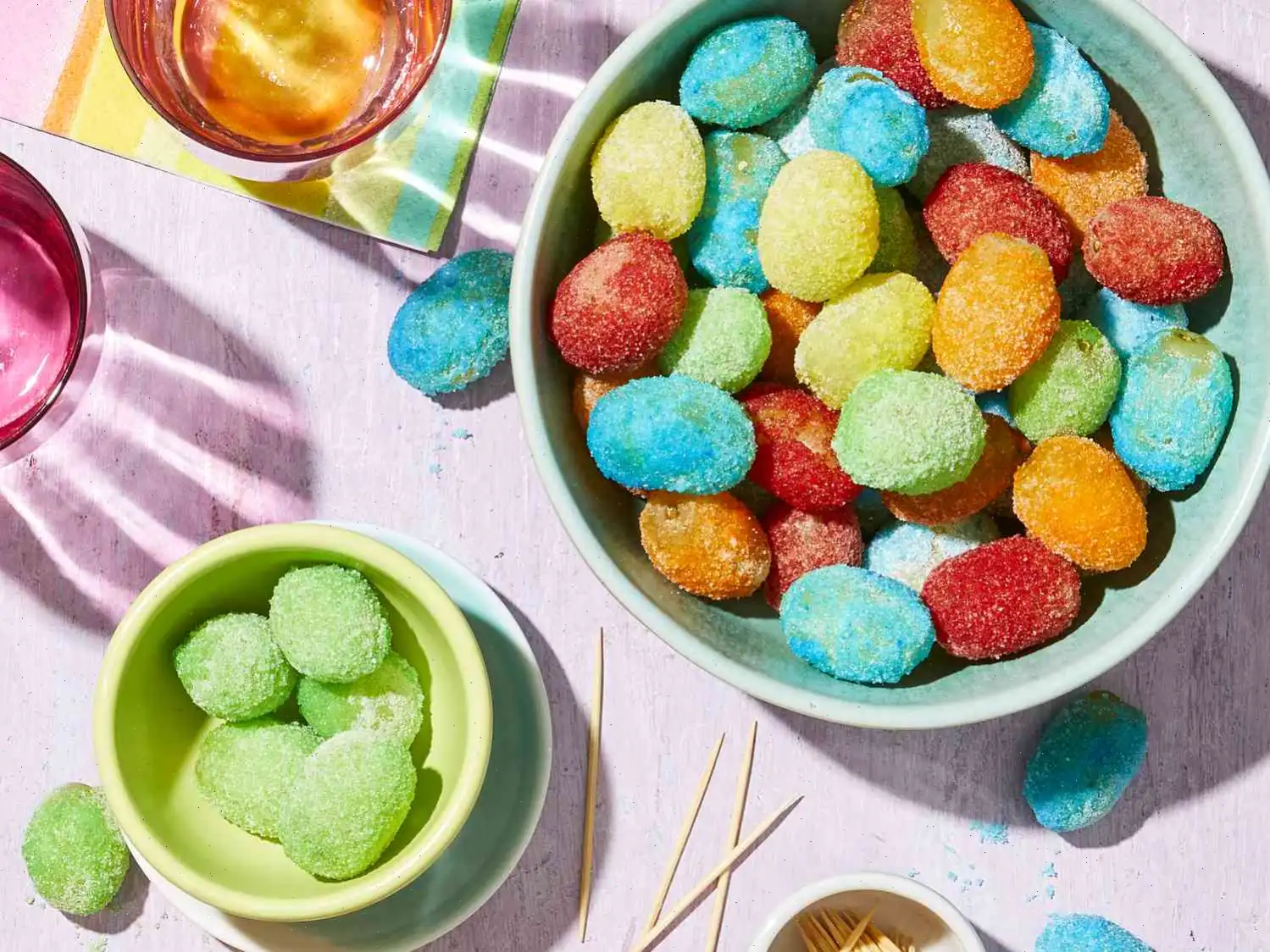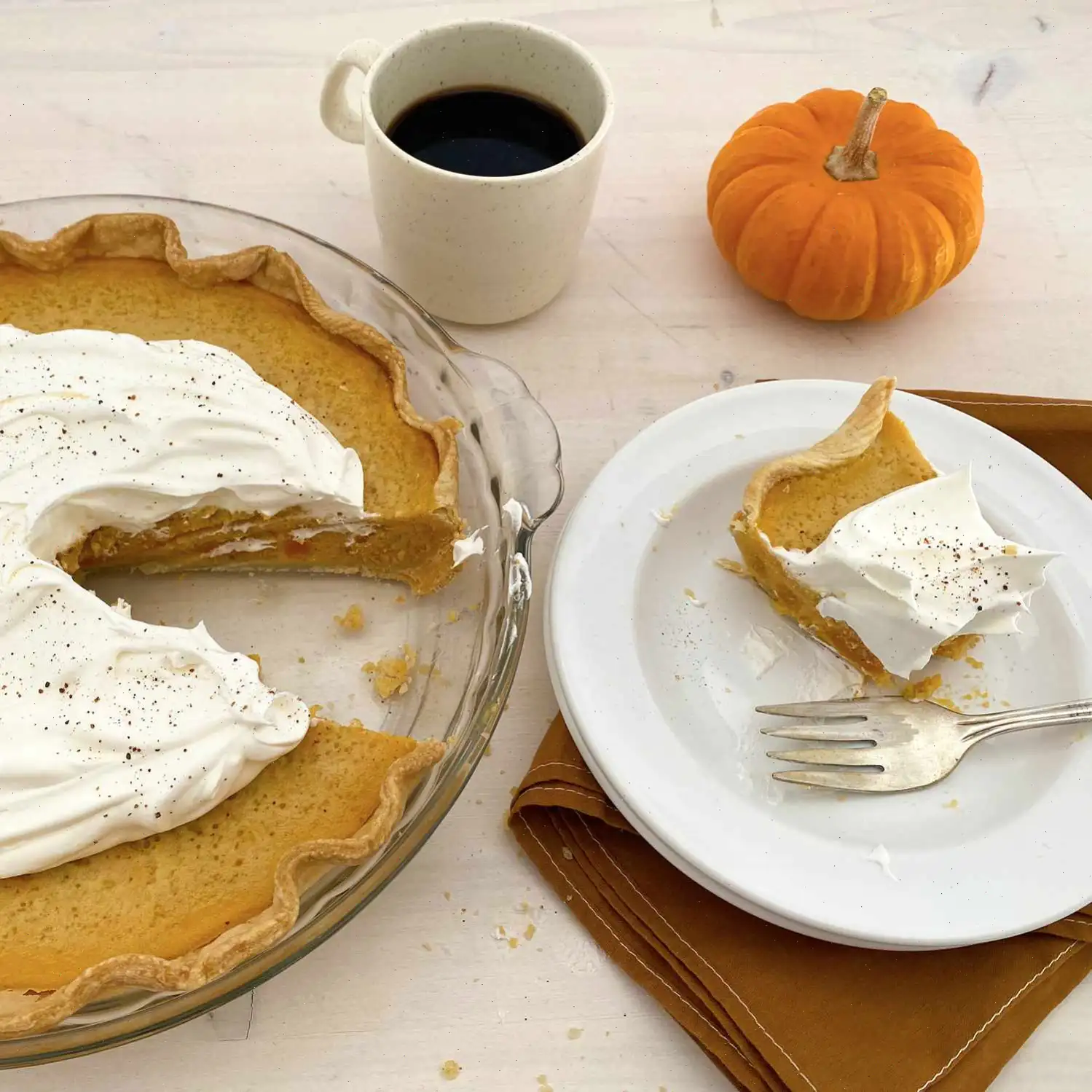
Salted Caramel Sauce Recipe
Ingredients
This recipe was developed at its original yield. Ingredient amounts are automatically adjusted, but cooking times and steps remain unchanged. Note that not all recipes scale perfectly.
Original recipe (1X) yields 8 servings:
- 1 cup white sugar
- 5 tablespoons butter, cut into slices
- cup heavy cream
- 1 tablespoon heavy cream
- 1 pinch sea salt, or to taste
Directions
Step 1: Place the sugar in a heavy-bottomed saucepan set over medium-high heat. Stir continuously until the sugar begins to melt.
Step 2: Continue stirring until the sugar completely melts, begins to darken, and all chunks dissolve, which will take around 10 minutes.
Step 3: Stop stirring and let the sugar cook until it starts to smoke and turns into a dark amber color. This should take between 3 to 8 minutes.
Step 4: Remove the saucepan from heat and let it sit for about 30 seconds to cool slightly.
Step 5: Whisk in the butter until it melts and combines smoothly with the caramelized sugar.
Step 6: Slowly pour in cup plus 1 tablespoon of heavy cream. Be careful as the mixture may bubble up.
Step 7: Sprinkle in a pinch of sea salt and stir until the sauce is smooth and all ingredients are combined.
Step 8: Transfer the caramel sauce to a jar and let it cool completely before storing it in the refrigerator.
Chef's Note
Drizzle the caramel sauce over ice cream and garnish each serving with a touch of flaky sea salt, if desired.
Nutrition Facts (per serving)
- Calories: 215
- Total Fat: 13g (17% Daily Value)
- Saturated Fat: 8g (41% Daily Value)
- Cholesterol: 41mg (14% Daily Value)
- Sodium: 97mg (4% Daily Value)
- Total Carbohydrates: 25g (9% Daily Value)
- Total Sugars: 25g
- Protein: 0g
- Calcium: 13mg (1% Daily Value)
- Iron: 1mg (3% Daily Value)
- Potassium: 15mg
* Percent Daily Values are based on a 2,000 calorie diet. Your daily values may be higher or lower depending on your calorie needs.
** Nutrient information is not available for all ingredients. Amount is based on available nutrient data.

History of Salted Caramel Sauce
The origins of salted caramel are often traced back to the early 1980s in Brittany, a region in the northwest of France. The combination of caramel and salt was introduced by French chefs who took advantage of the coastal regions abundant sea salt. The technique quickly gained popularity due to its sophisticated blend of sweet and salty flavors, offering a rich contrast to traditional caramel desserts. Over time, salted caramel moved beyond Europe, becoming a global favorite, especially in the United States, where it became a staple in modern desserts like ice cream, tarts, and cakes.
Regional Variations
Salted caramel has regional variations that differ slightly in flavor and preparation methods. In France, for instance, the Breton salted caramel is often made with local sea salt, which adds a distinctive mineral taste. In contrast, in the United States, the trend has expanded to include salted caramel lattes, candies, and even savory dishes. The American version tends to be sweeter and often uses larger amounts of salt compared to the French version, where the balance between sweetness and saltiness is more subtle.
How It Differs from Similar Dishes
While caramel sauce is a popular topping for desserts, salted caramel stands out because of the addition of sea salt, which enhances the depth of flavor. Traditional caramel sauces are made from sugar, butter, and cream, but salted caramel adds a touch of salt at the end, which amplifies the sweetness and creates a complex flavor profile. The contrast between salty and sweet is what makes salted caramel unique, and this addition differentiates it from regular caramel sauces and toffee-based recipes.
Where It Is Typically Served
Salted caramel sauce is incredibly versatile and can be served in a variety of desserts. It is most commonly used as a topping for ice cream, pancakes, and waffles, where its rich, buttery taste complements the sweetness of the dishes. Additionally, salted caramel sauce is often drizzled over cakes, brownies, and pies, adding a luxurious layer of flavor. In some high-end bakeries, it is even used as a filling for pastries or as an accent in hot chocolate and coffee drinks, making it a favorite in both sweet and savory applications.
Interesting Facts
1. The popularity of salted caramel surged in the early 2000s when it started appearing on menus of trendy dessert cafes and gourmet ice cream shops.
2. Sea salt is often preferred over table salt in salted caramel recipes because its larger crystals provide a more intense and satisfying crunch.
3. There is a phenomenon known as "The Salted Caramel Craze," where new products such as salted caramel popcorn, chocolate, and even beer have made their way into mainstream markets.
4. Salted caramel has become a modern flavor sensation, so much so that it is often included in seasonal holiday offerings like salted caramel-flavored candies and beverages during fall and winter months.
5. The addition of salt not only enhances the flavor but also reduces the perceived sweetness, making salted caramel a more sophisticated treat that appeals to a wider audience.
Conclusion
Salted caramel sauce is a perfect example of how a small twist on a classic can create an entirely new and beloved flavor experience. Whether you're using it to elevate a simple dessert or to add complexity to a more elaborate dish, its rich, sweet, and salty profile makes it a must-have for any home chef.
FAQ about Salted Caramel Sauce Recipe
Comments
Timothy Allen
06/20/2024 06:27:06 PM
Review: Wonderful caramel sauce. Initially, I wasn't fond of the slightly bitter taste in my first attempt. For the second batch, I removed it from the heat as soon as all the sugar crystals melted and the color began to turn a beautiful caramel hue, right before it could reach the smoke point. I decided to add more cream than the recipe called for, along with half a teaspoon of vanilla extract. My only misstep was pouring the cream too quickly, resulting in the sugar crystallizing like rock candy. It took a lot of patience and stirring over low heat to salvage it. However, in the end, the sauce turned out to be absolutely delicious. This recipe is fantastic; I had no idea it was so simple and cost-effective to create my own caramel sauce.
Kenneth Hill
03/19/2025 06:07:17 AM
After watching Chef John's video twice and reading through all the reviews, I decided to give this sauce a try. Despite some people mentioning a bitter taste, I'm happy to report that my sauce turned out wonderfully! It was delicious, with just the right balance of sweetness and saltiness. I used a large enamel cast iron Dutch oven with a bisque-colored interior, as I find it retains heat really well. As I whisked the sauce, the sugar initially seemed like nothing was happening, then it started to clump up into little white chunks. But after some time, the sugar began to melt and change color from clear to a light yellowish hue, eventually becoming a light amber without any sugar chunks left. I stopped stirring when I noticed wisps of smoke coming off the sugar, and swirled the liquid like Chef John suggested. Once it darkened slightly in color, I moved it to another burner and added butter followed by heavy cream. I didn't have French salt, so I used a bit of Himalayan pink sea salt from Trader Joe's, mixed it in, and tasted the caramel. It was amazing - not bitter at all, just perfectly sweet. I'm so pleased with how it turned out that I'm already planning to make another batch to give as a gift. Thank you, Chef John! Goodbye, store-bought caramel sauces.
William White
01/26/2024 04:04:23 PM
Delicious! Although my first attempt resulted in a slightly burnt taste due to the caramel getting too dark, I learned to remove it from the heat while there are still some chunks left to melt. The residual heat from the melted sugar will take care of the remaining chunks over time.
Tyler Cruz
12/22/2023 09:25:59 PM
I added a bit more salt than recommended, but this recipe turned out fantastic. I made the mistake of not stirring continuously, but managed to salvage it just in time. Lesson learned: always keep stirring!
Gregory Phillips
05/04/2023 09:27:27 AM
It requires a bit too much butter in my view, but besides that, it's fantastic!!








